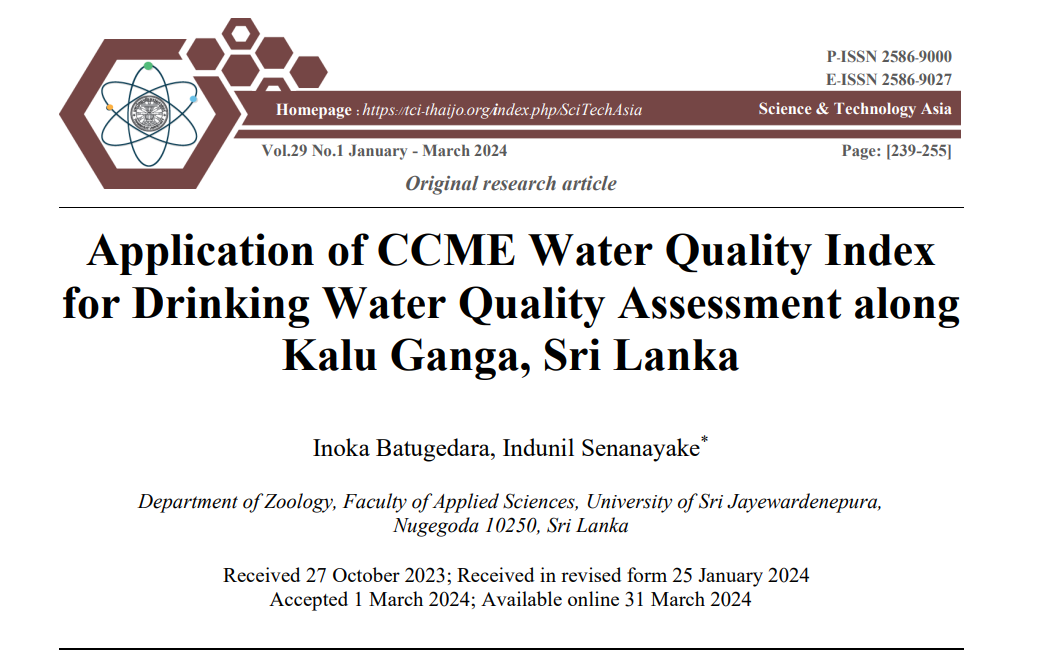Inoka Batugedara and Indunil Senanayake
Published in Science & Technology Asia
Kalu Ganga is considered one of the major rivers in Sri Lanka. The river contributes to drinking water supply, domestic water usage, agriculture, mini-hydropower generation, small-scale industries, and recreation. The present research fills the information gap regarding the water quality status along Kalu Ganga. At the same time, only a few attempts have been made using the Canadian
Council of Ministers of the Environment Water Quality Index (CCME WQI) to interpret water quality conditions in Sri Lankan rivers. Therefore, this study attempted (i) to investigate the temporal and spatial variations in drinking water quality along Kalu Ganga and (ii) to calculate the CCME WQI. Herein, July-October (2020) were considered wet months, while January-February (2021) were considered dry months. Altogether, twenty surface water sampling locations were selected, including six locations in the head zone, seven locations in the transport zone, and another seven locations in the deposition zone. In total, thirteen water quality parameters were measured
on a monthly basis using standard methodologies; these included temperature, pH, total dissolved solids, electrical conductivity, salinity, dissolved oxygen, biological dissolved oxygen, nitrate, total phosphate, orthophosphate, total alkalinity, total hardness, and chlorophyll-a. CCME WQI was calculated using the total hardness, total dissolved solids, total alkalinity, electrical conductivity,
pH, nitrate, orthophosphate, and total phosphate parameters. All sampling locations were categorised as excellent for drinking according to CCME WQI (95-100), with the exception of sampling locations in the deposition zone with fair-good quality (79-80) during the dry months. Overall, the drinking water in Kalu Ganga was categorized as excellent-fair based on the water quality parametersfor this WQI calculation. However, saltwater intrusion was observed up to 14km from the river mouth during the dry months. Further studies, including heavy metals and microbial parameters, can further develop the WQI.



